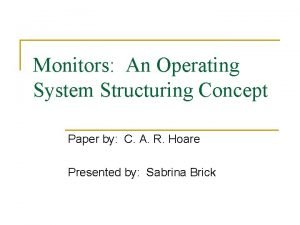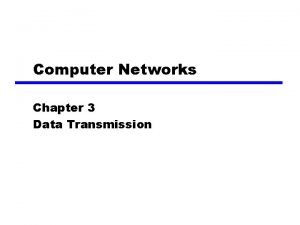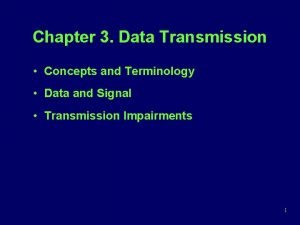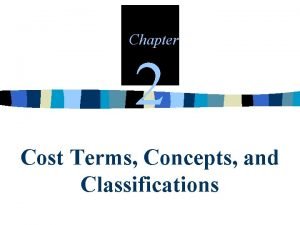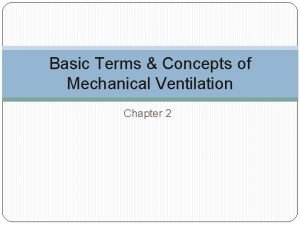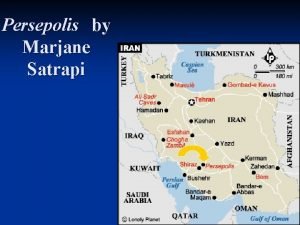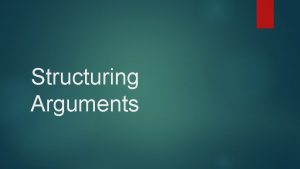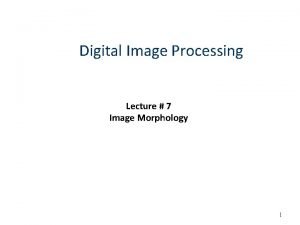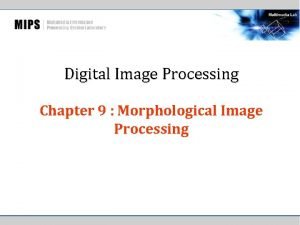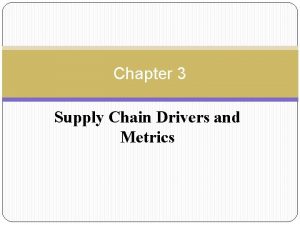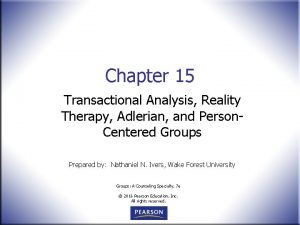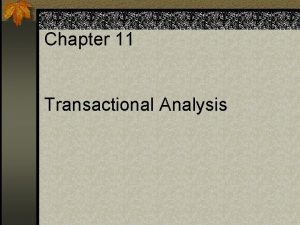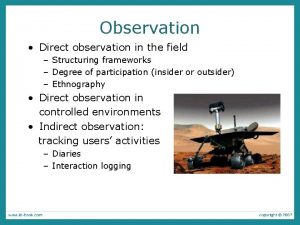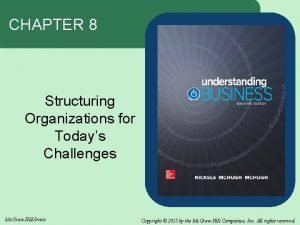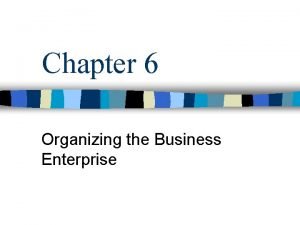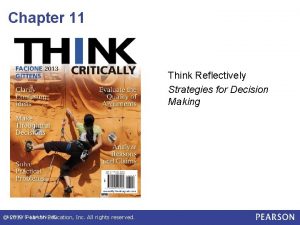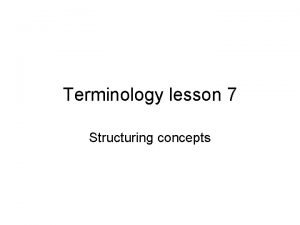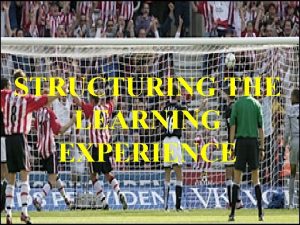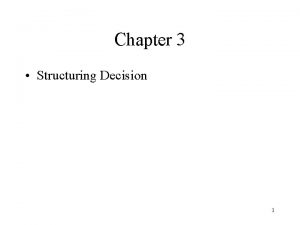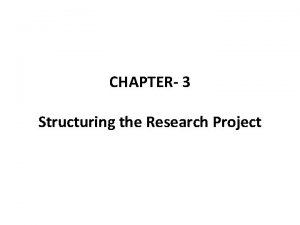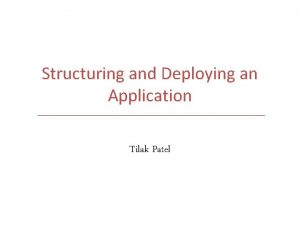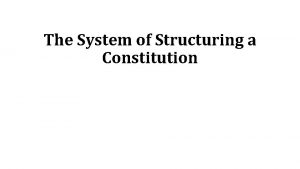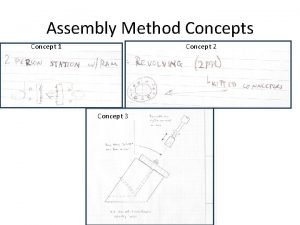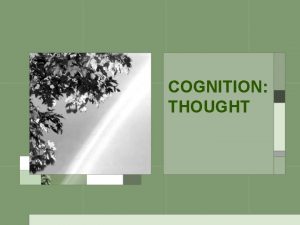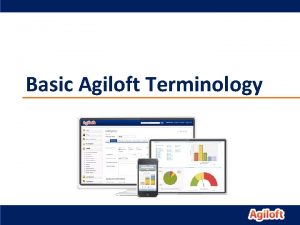Terminology lesson 8 Structuring concepts Concept structure Terms























- Slides: 23

Terminology lesson 8 Structuring concepts

Concept structure • Terms represent specialised knowledge • This knowledge is structured by the specialist • The terminologist’s job is – to discover the structure – to make it explicit • by tree diagrams • by definitions • by relating terms one with another

Representing concept structure • Concept relationships can be accounted for using semantics (study of meaning) • To extract this knowledge from texts – Cf. L’Homme (2004: 156) • Three major types of relations – Hierarchical (generic) • ‘isa’ relationship – Meronymical (partitive) • ‘hasa’ relationship – Indirect (other)

Hierarchical relationships • Superordinate concept • Subordinate concept – Representation standardized (ISO) frond fertile frond infertile frond (? ) ‘Not every frond has spores under it: fronds that have the spores are called fertile fronds. ’

Meronymic relations • Relationship of part to whole – Representation standardized (ISO) fern frond pinna ‘The leafy branch of the fern is usually called a frond. The small leaflets that make up the whole frond are called pinnae. ’

Deducing meronymic relationships from texts • • If you look underneath a fern frond, you will often see small clumps, spots or patches that look like they are stuck onto the under surface of the pinnae. These patches are where you find the spores. The spores grow inside casings called sporangia. The sporangia may clump together into what are called sori (singular: sorus). Take a look more closely at the spore structures under the pinnae of In some cases, you will see that each is composed of myriads of smaller structures. These are the sporangia - the spore casings that hold the spores. Some ferns protect their sporangia with thin semi-transparent membranes, often globular in shape, called indusia. Inside the indusium (if there is one) there are the sporangia. fern frond pinna sorus indusium sporangia spore

Completing information • From the intial text, it is not clear what the relationship between sorus, indusium and sporangia is. • Find other texts which make this relationship clear. – Eg Ontario Ferns http: //ontarioferns. com/id/glossary/index. php

Added information • SPORES are tiny dust-like particles that grow in and are released from structures called SPORANGIA (singular: SPORANGIUM; plural: SPORANGIA). • A group of SPORANGIA is called a SORUS (singular: SORUS; plural: SORI). • SORI are sometimes covered by a flap referred to as an INDUSIUM. – From this we can deduce that there are several types of meronymic relationships • part of / containing • optional part/obligatory part (canonical/factultative Cruse 1986: 162) ‘parameronyms’ (medical school is a parameronym of university)

Four main types of meronymy • M. -Cl. L’Homme (2004: 100) distinguishes between several types of meronymy • Functional part/whole – body, heart, ventricule…; telephone: receiver, dial… • Element/whole – Software library, software programs • Portion/mass – Slice, bread • Constituant/object – Tyre, rubber • Phase/activity – Water cycle: evaporation, cloud formation, precipitation • Place/zone – Oasis; desert

Hint: label meronymic relationships fern frond blade pinna indusium sorus sporangia spore

Indirect relationships • chronological • functional • causal – and semantic predicates • Who does what…?

Inducing indirect relationships from texts • What happens with a gametophyte can only be seen under a strong lens, as the gametophyte is small usually less that half an inch across. The gametophyte has two sets of reproductive organs on its underside the male parts called the antheridia, and the female parts called the archegonia. The antheridium contains sperm cells while the archegonium contains egg cells. They are each located on the gametophyte, a little separated from each other. If there is a film of moisture, the sperm cells from the antheridium swim towards the egg cells in the archegonium. This may be on the same gametophyte or an adjacent one.

Some known relationships • Meronymic gametophyte antheridium archegonium sperm cell egg cell The gametophyte has two sets of reproductive organs […] the male parts called the antheridia, and the female parts called the archegonia. The antheridium contains sperm cells while the archegonium contains egg cells.

Chronogical relations spore gametophyte sporophyte adult plant

Combining different relationships spore gametophyte antheridium archegonium sperm cell egg cell sporophyte adult plant

Other semantic issues • The metaphor in terminology – Inspired by cognitive linguistics – Lakoff & Johnson (1980) Metaphors We Live By, University of Chicago Press. Metaphor not just a figure of speech, it is incorporated throughout language and is pervasive: • ARGUMENT IS WAR – – Your claims are indefensible. He attacked my whole argument. His criticisms were right on target. I've never won an argument with him.

Mapping • Source domain – Domain we draw from • e. g. war • Target domain – domain we try to understand • e. g. argument • Mapping – systematic correspondence between the two domains • Criticisms, etc. are weapons • Someone wins, someone loses…

Metaphor as conceptual construction • Embodied/experiential metaphor: understanding the world in terms of our body • up is happy down is sad so… going on a high… ? • conceptual metaphor: understanding one conceptual domain in terms of another conceptual domain

Creating new terms ‘Metaphor is one of our most important tools for trying to comprehend partially what cannot be comprehended fully’ (Lakoff & Johnson 1980: 193) ‘Idealized cognitive model’ Temmerman 2000

DNA IS A LANGUAGE • Nucleotide sequences seen as a language – Translated to plain text of polypeptides The scientist did not use a metaphor to name a concept s/he had identified S/he used a metaphor to discover the principle The language used remained in the name. cf. splicing

Pervasive metaphors in LSP • Sylvie Vandaele – http: //web. me. com/tris. kell. 30/Page. Vandaels/Accueil. html ICM used in conceptualising ‘structures des récepteurs à sept passages membranaires’ Source domain : movement target domain : spatial positioning ‘The medial supraclavicular nerves run inferomedially across the external jugular vein… ’

Crochet terminologique Identité des traits sémantiques trouvés dans plusieurs contextes et définitions et prouvant l'uninotionnalité des données consignées sur une fiche terminologique. – La présence d'un crochet terminologique est habituellement nécessaire à la pleine validité d'une fiche terminologique bilingue. – Faute d'un crochet explicite, il faut que se dégage du sens global des contextes un crochet implicite qui atteste l'appariement des notions. – Généralement, seul un spécialiste peut juger de la validité d'une fiche sans crochet terminologique explicite.

article • ‘The creation of concept systems is still often considered to be a necessary part of thematic terminology work, and the terminological relations that hold between elements of this system are some of the most important elements in the crochet terminologique (Dubuc 2002) that helps to establish equivalence between terms. However, all too often the extensive analysis of terminological relations required for this work (e. g. choosing terms and concepts to be included in terminological resources, evaluating equivalence between terms, and describing concepts) is minimised in term records, dictionaries or glossaries, or must be unearthed from definitions, contexts, or observations by attentive users’ – Elizabeth Marshman, Julie L. Gariépy & Charissa Harms (2012), ‘Helping language professionals relate to terms: Terminological relations and termbases’, The Journal of Specialised Translation, 18. – http: //www. jostrans. org/issue 18/art_marshman. php
 Monitors in os
Monitors in os Terminology and concepts
Terminology and concepts ñ meaning
ñ meaning Data transmission concepts and terminology
Data transmission concepts and terminology Cost classifications
Cost classifications Basic terms and concepts of mechanical ventilation
Basic terms and concepts of mechanical ventilation Graphic novel terms
Graphic novel terms Like terms and unlike terms in polynomials
Like terms and unlike terms in polynomials Identifying like terms
Identifying like terms Structuring system requirements
Structuring system requirements Structuring arguments
Structuring arguments Image erosion
Image erosion Image
Image Time structuring in transactional analysis
Time structuring in transactional analysis Supply chain drivers definition
Supply chain drivers definition Group leaders of reality therapy groups are
Group leaders of reality therapy groups are Time structuring in transactional analysis
Time structuring in transactional analysis Reverse triangular merger
Reverse triangular merger Direct indirect observation
Direct indirect observation International tax structuring
International tax structuring Structuring organizations for today's challenges
Structuring organizations for today's challenges Organizational structuring
Organizational structuring Mixed departmentalization
Mixed departmentalization Dominance structuring examples
Dominance structuring examples
